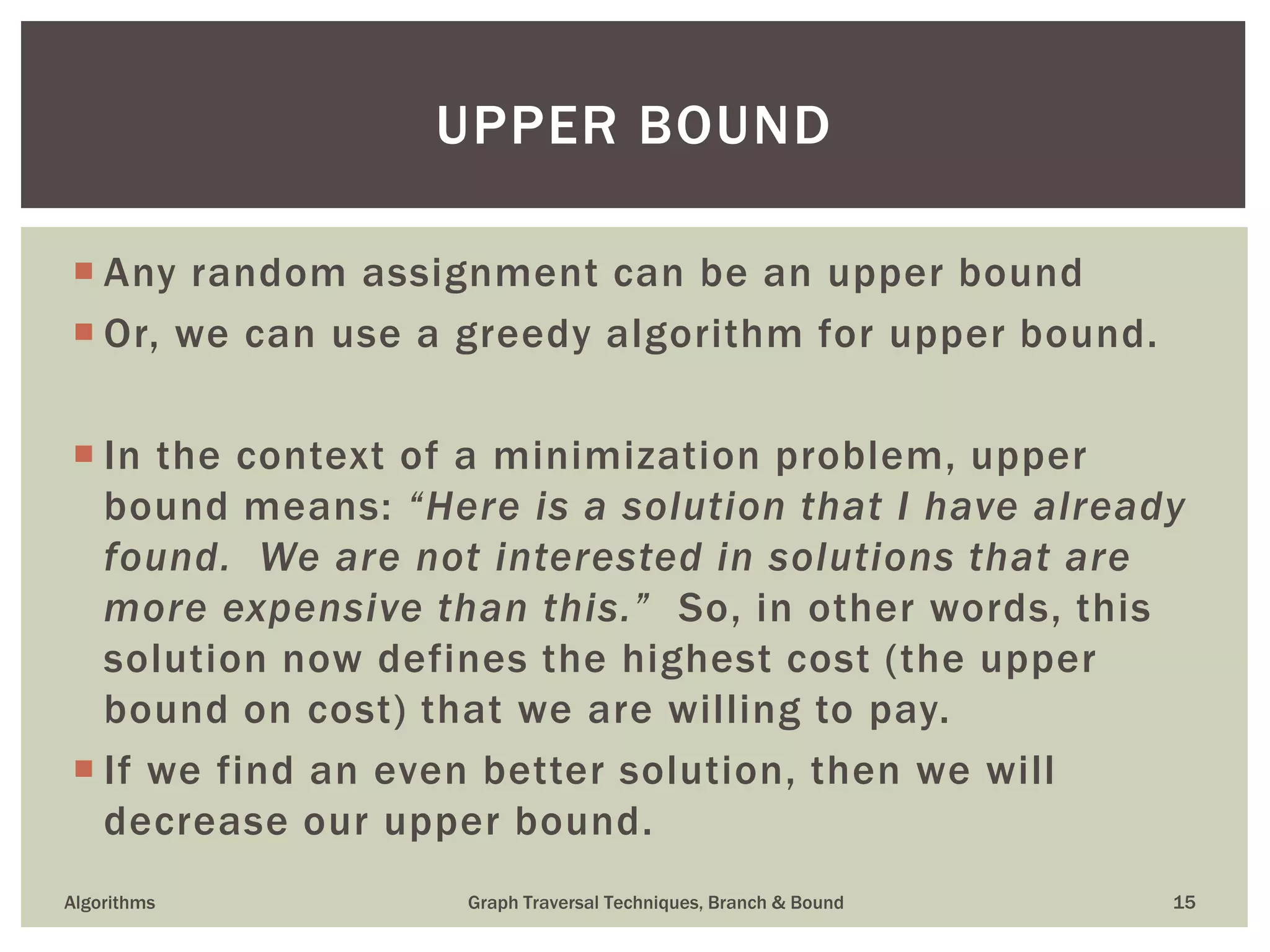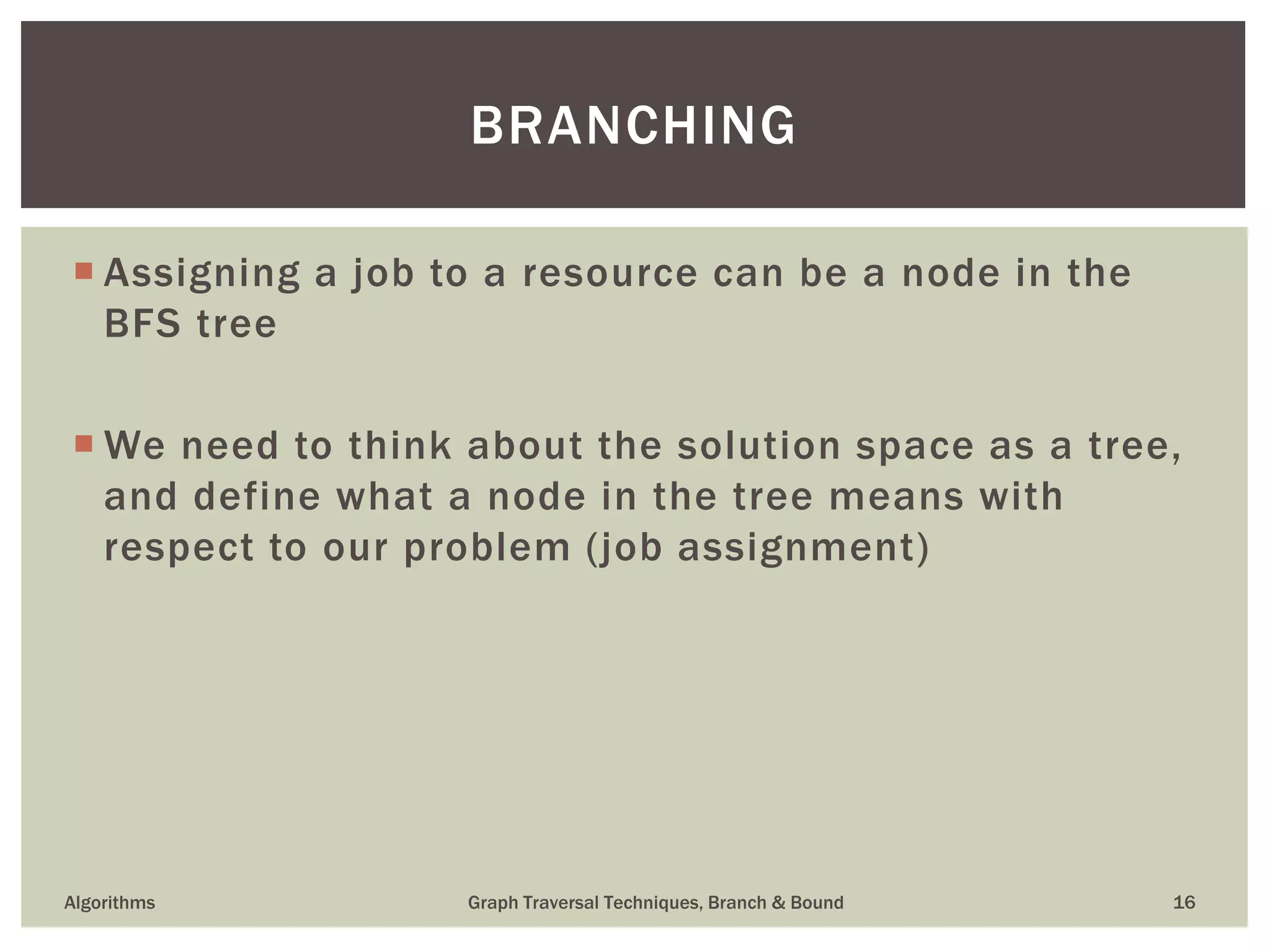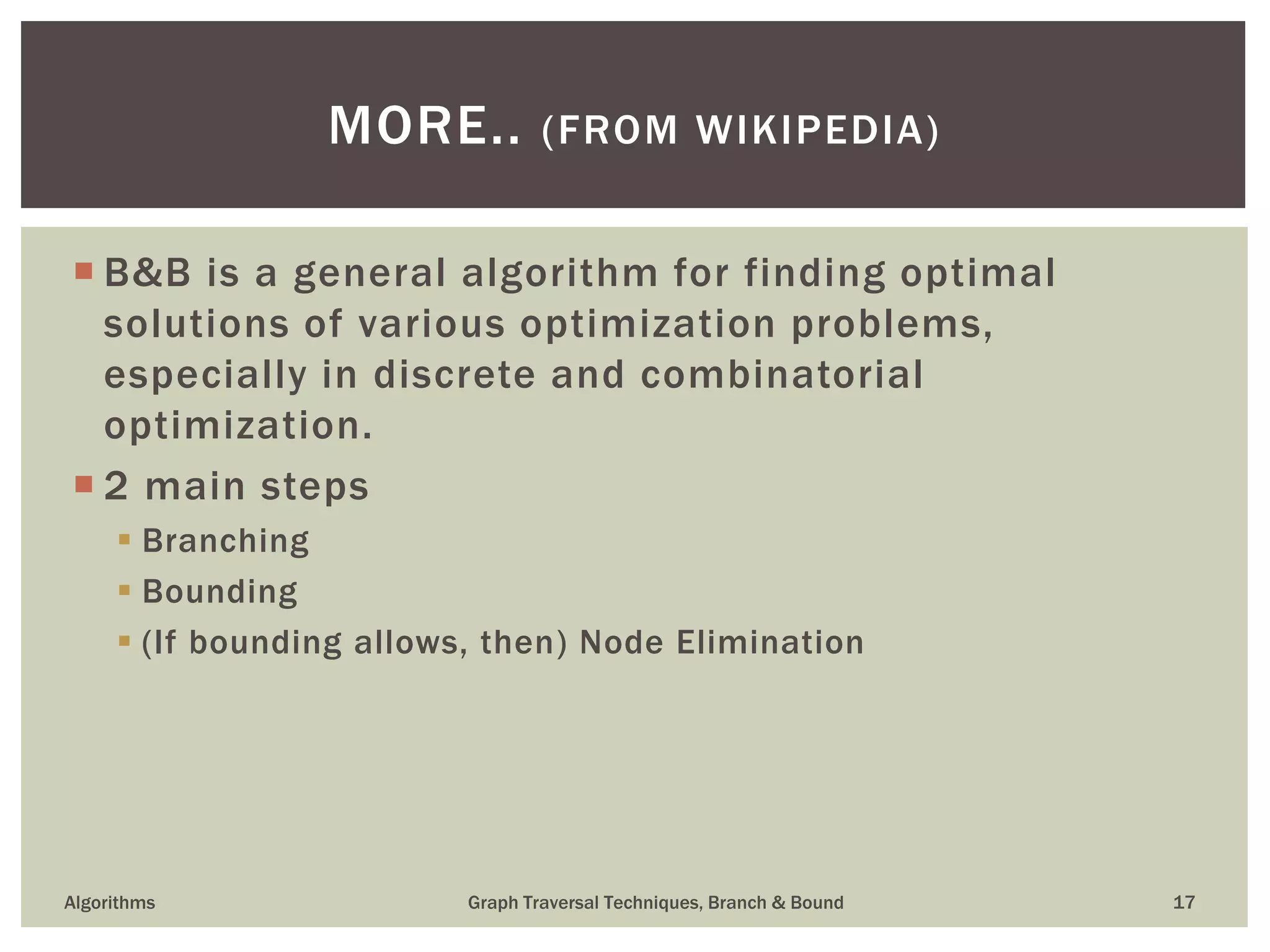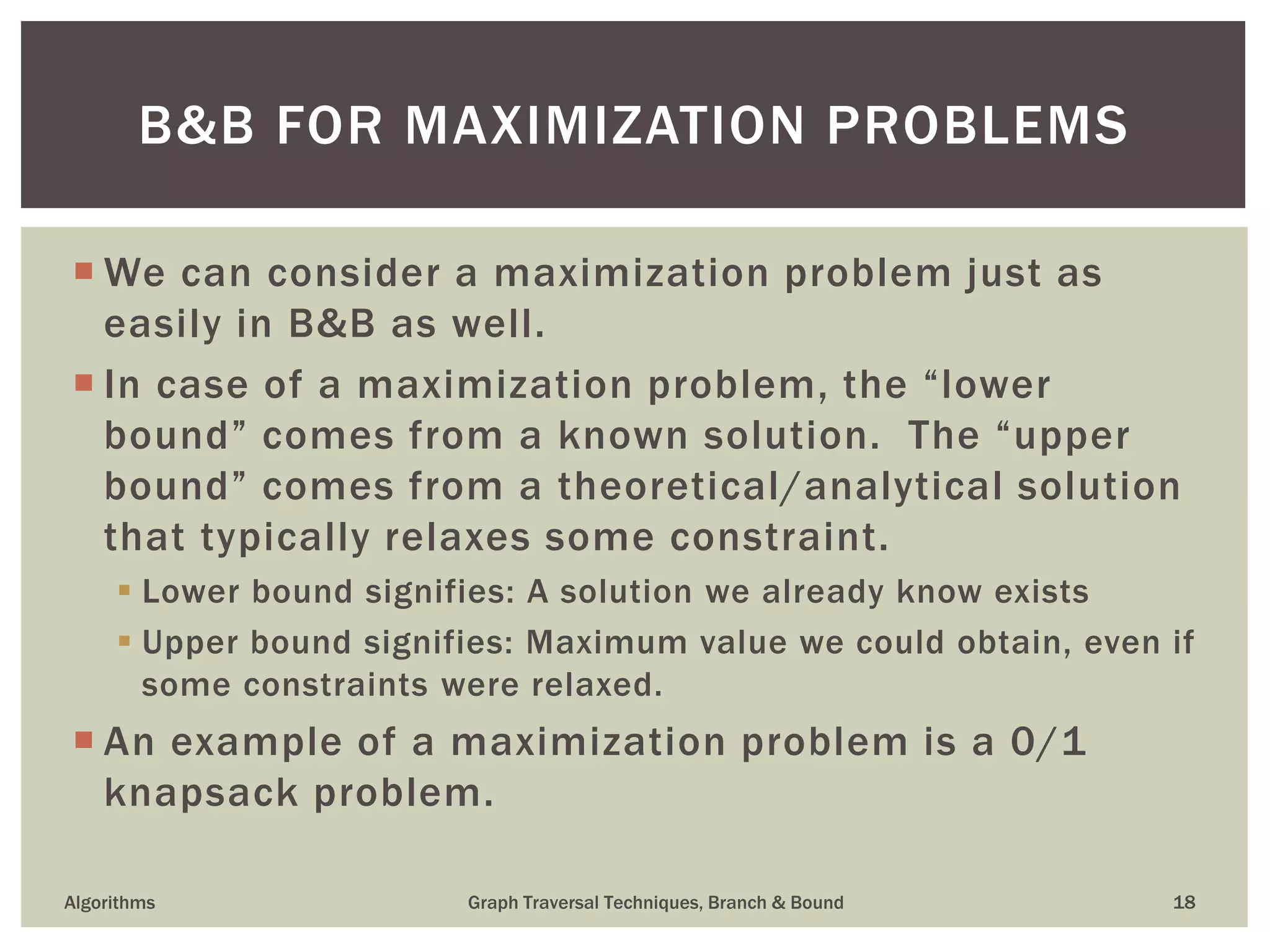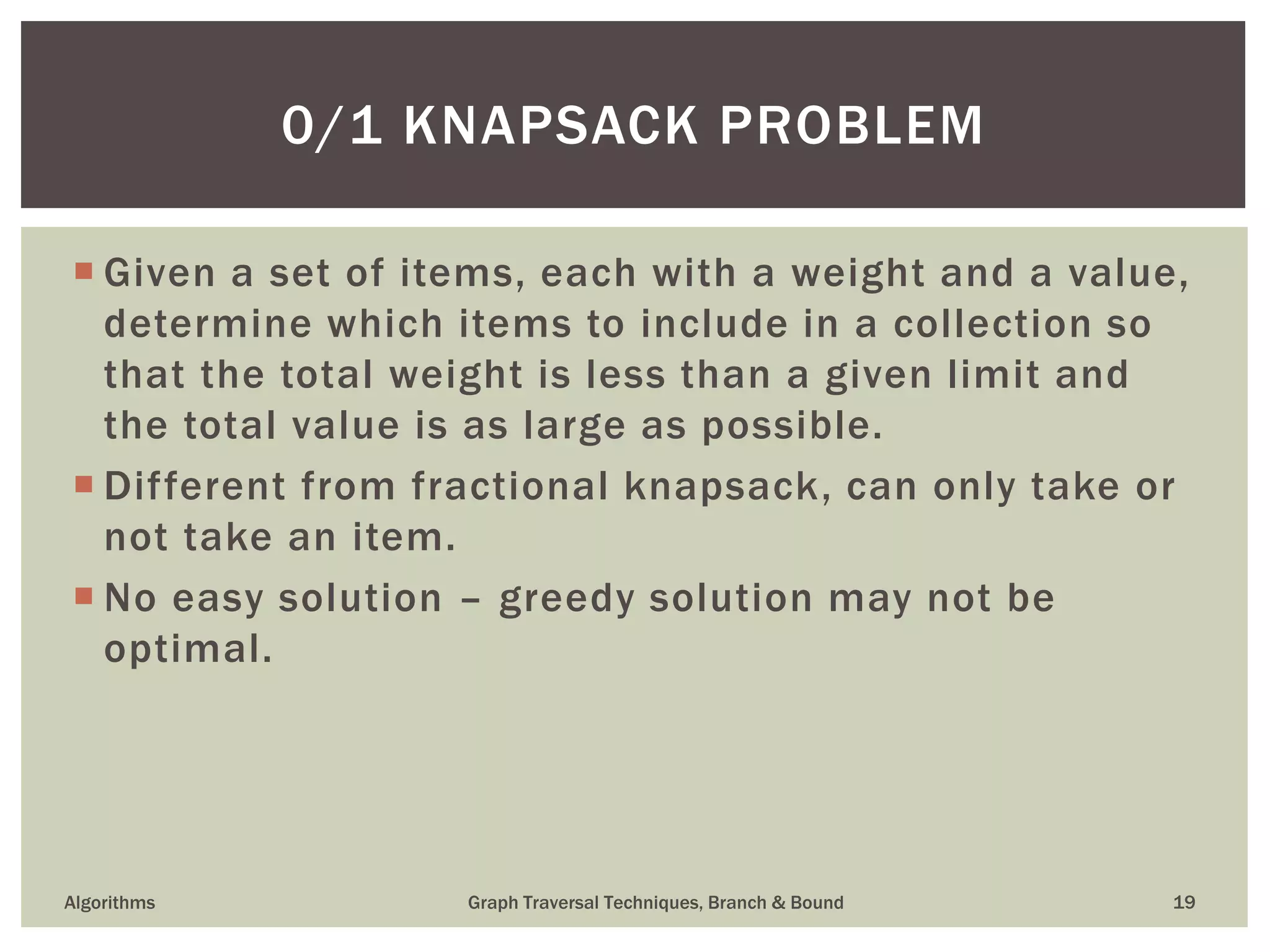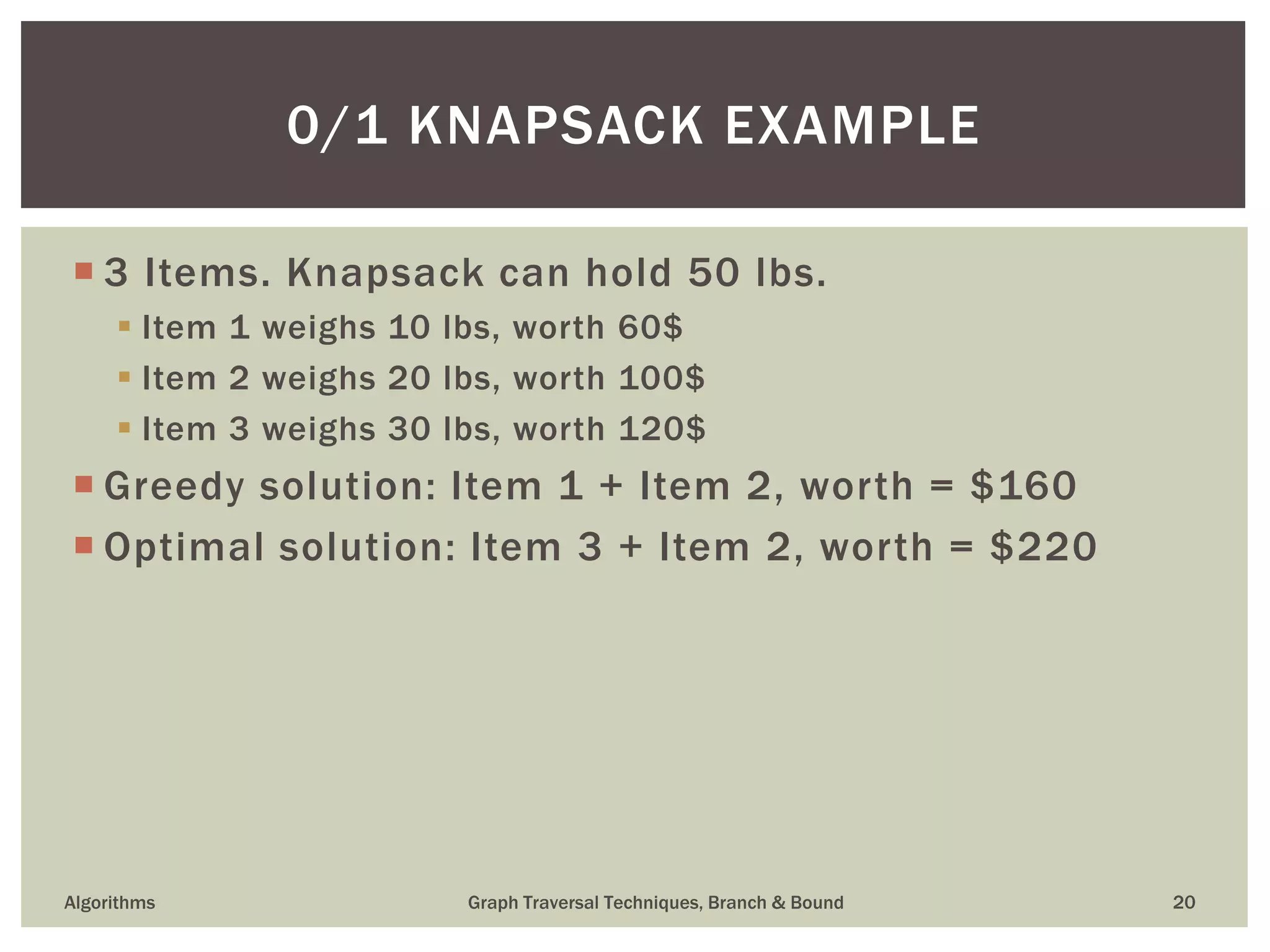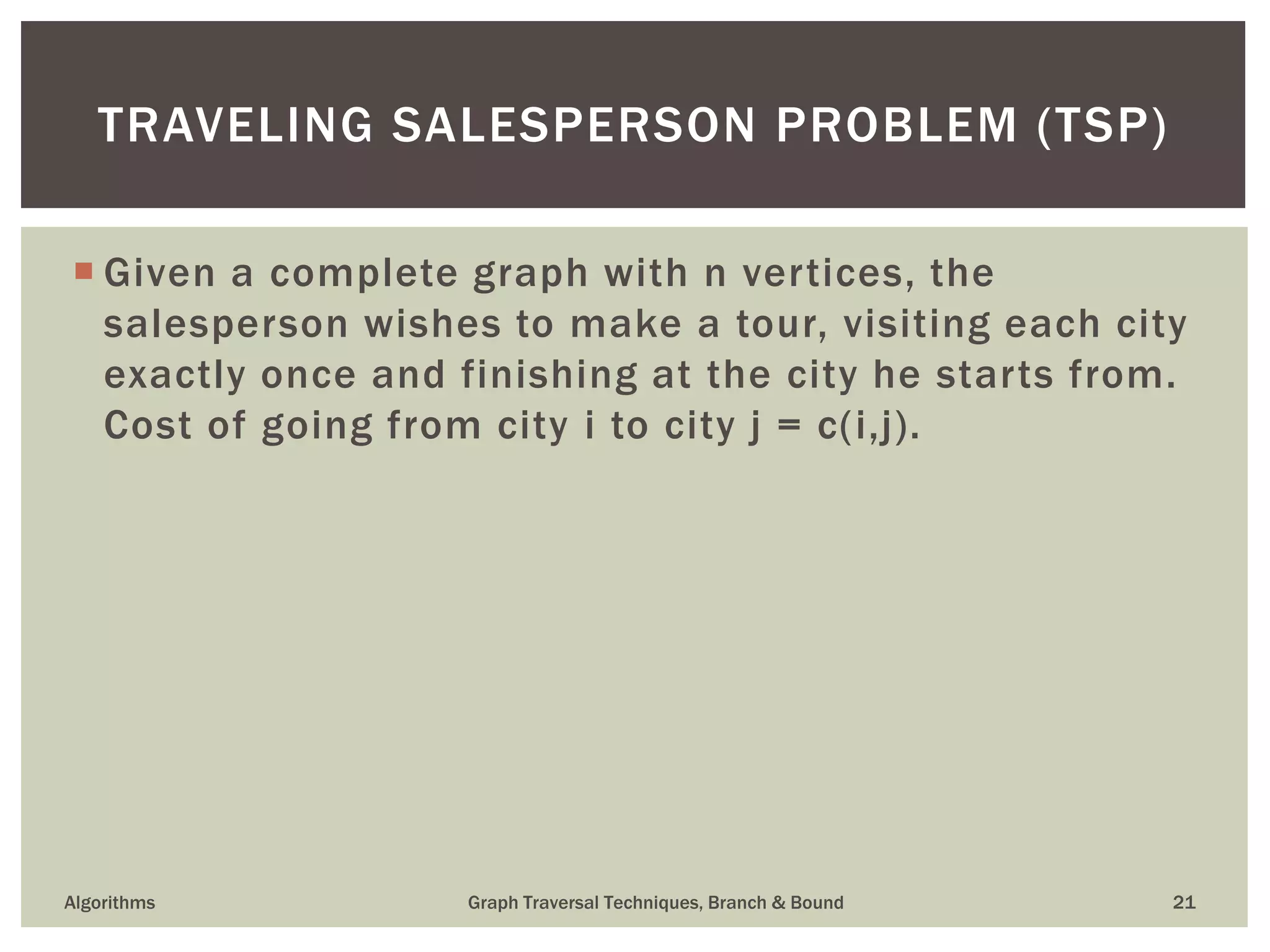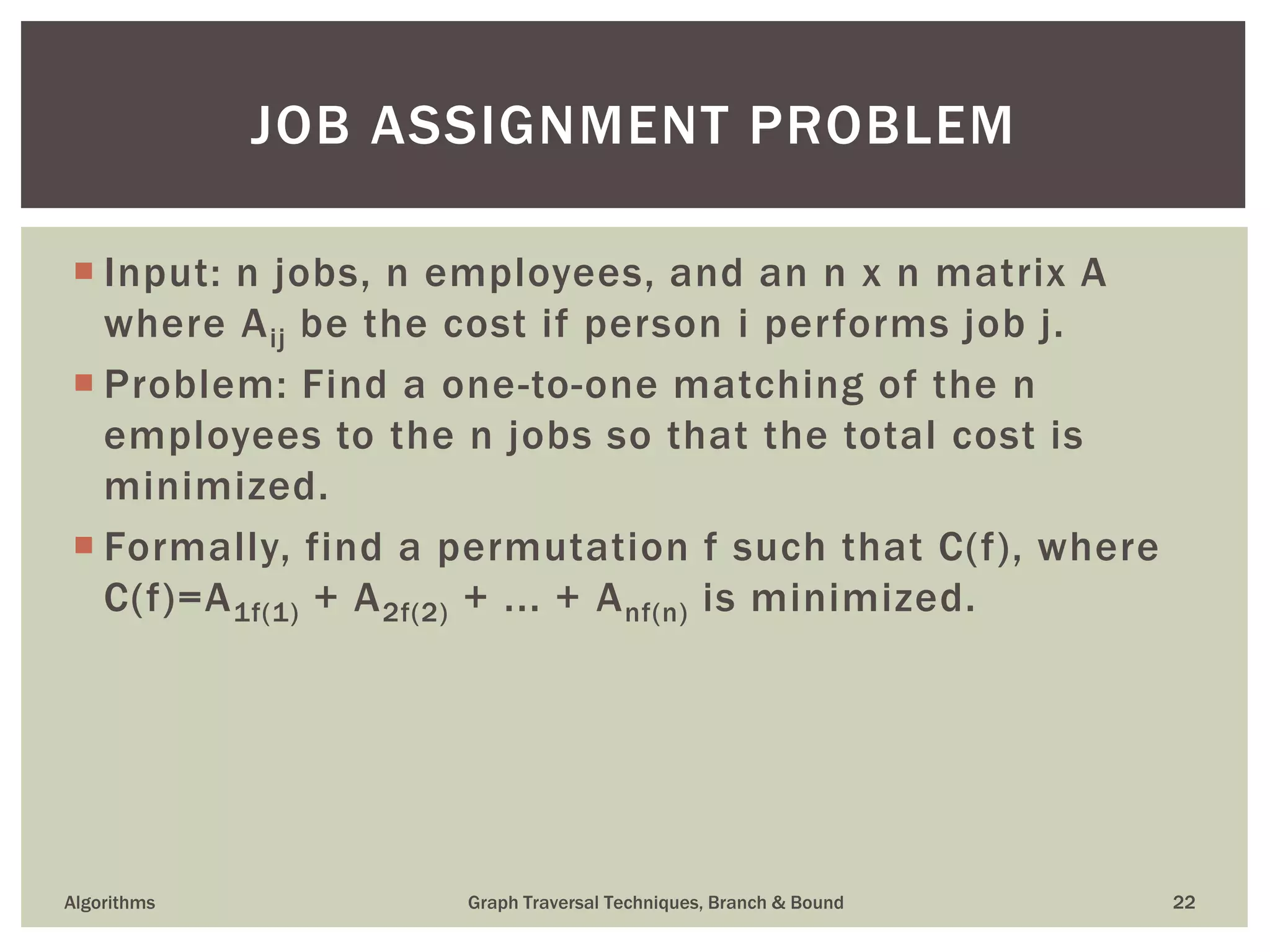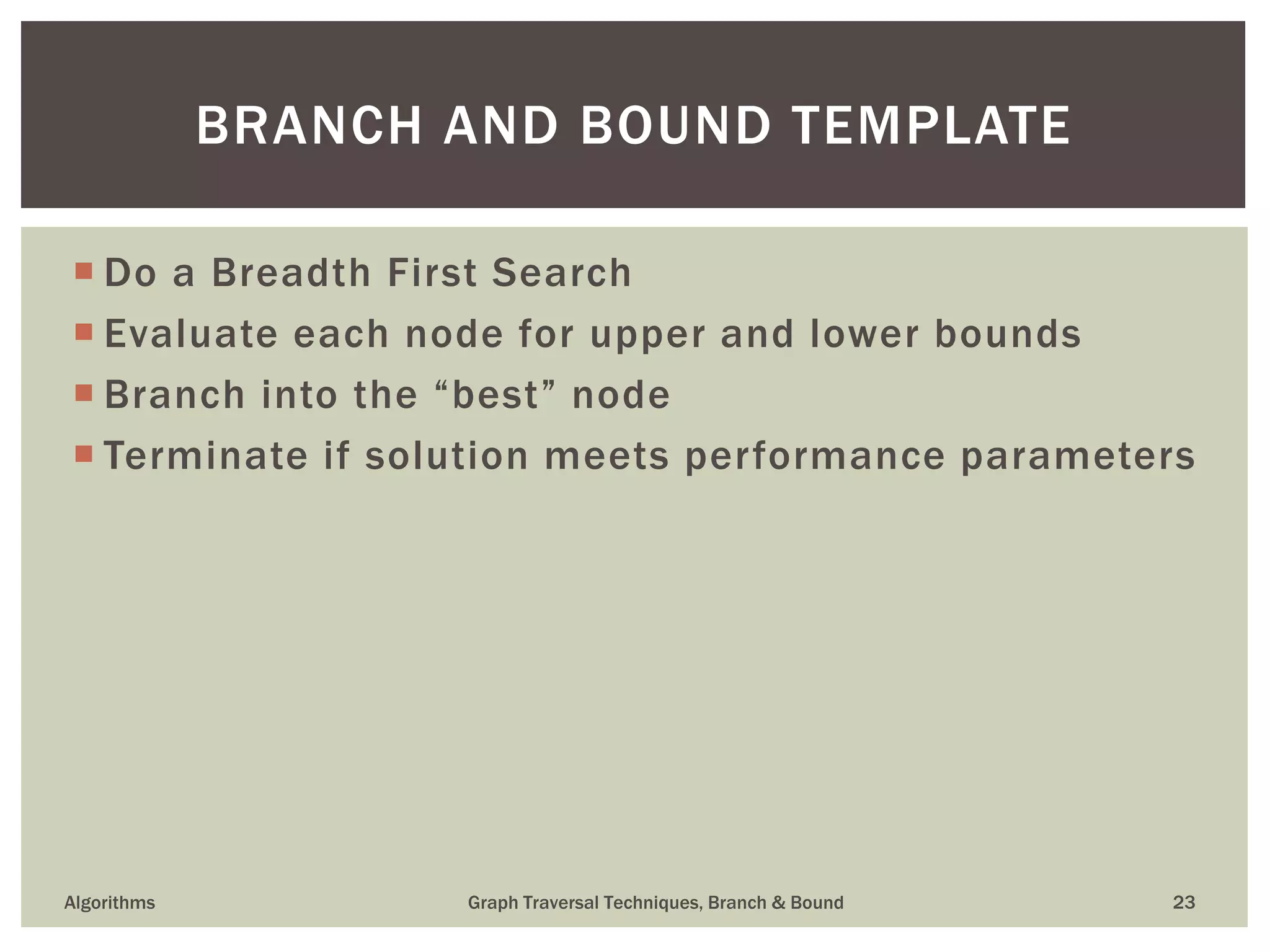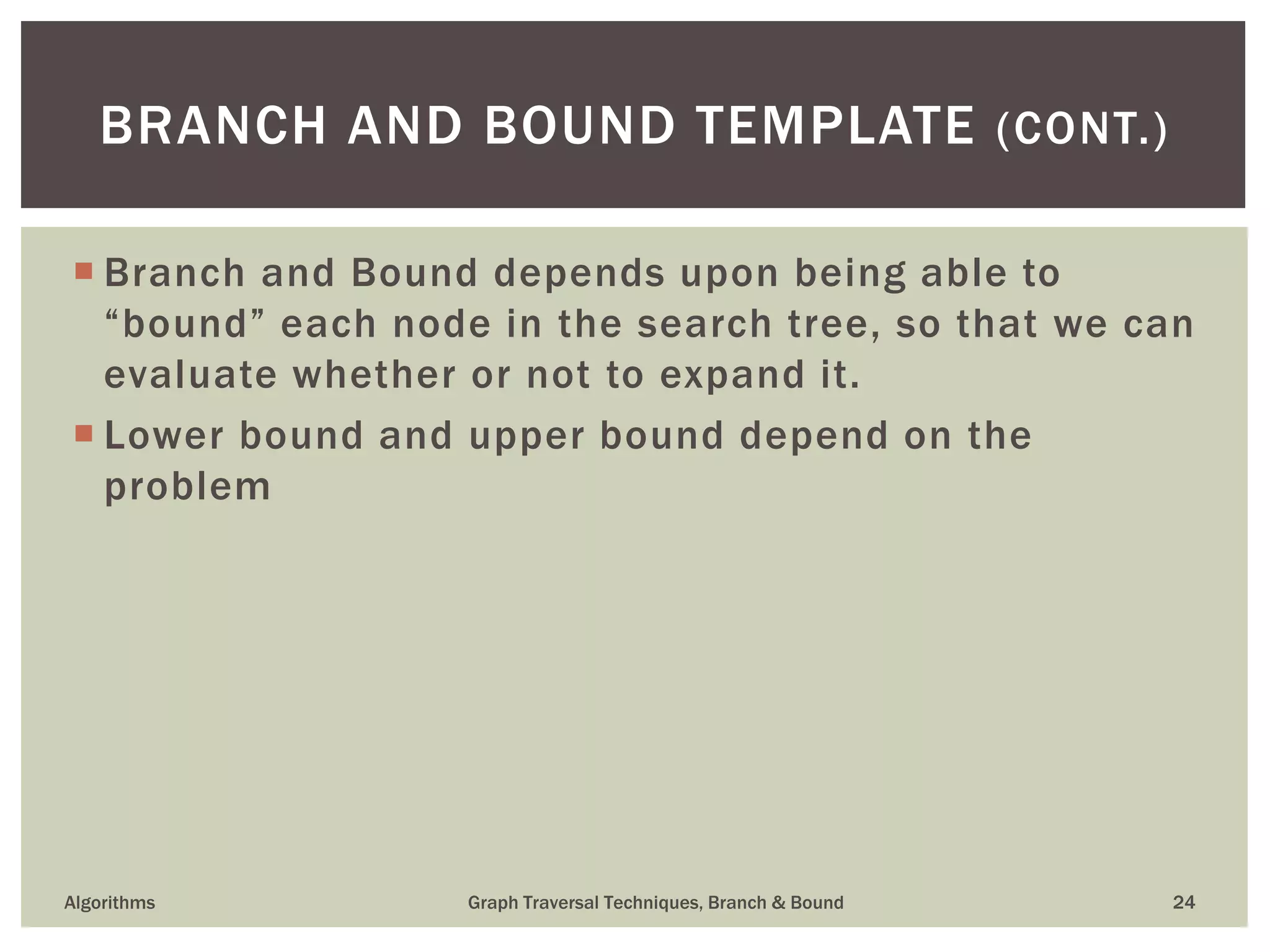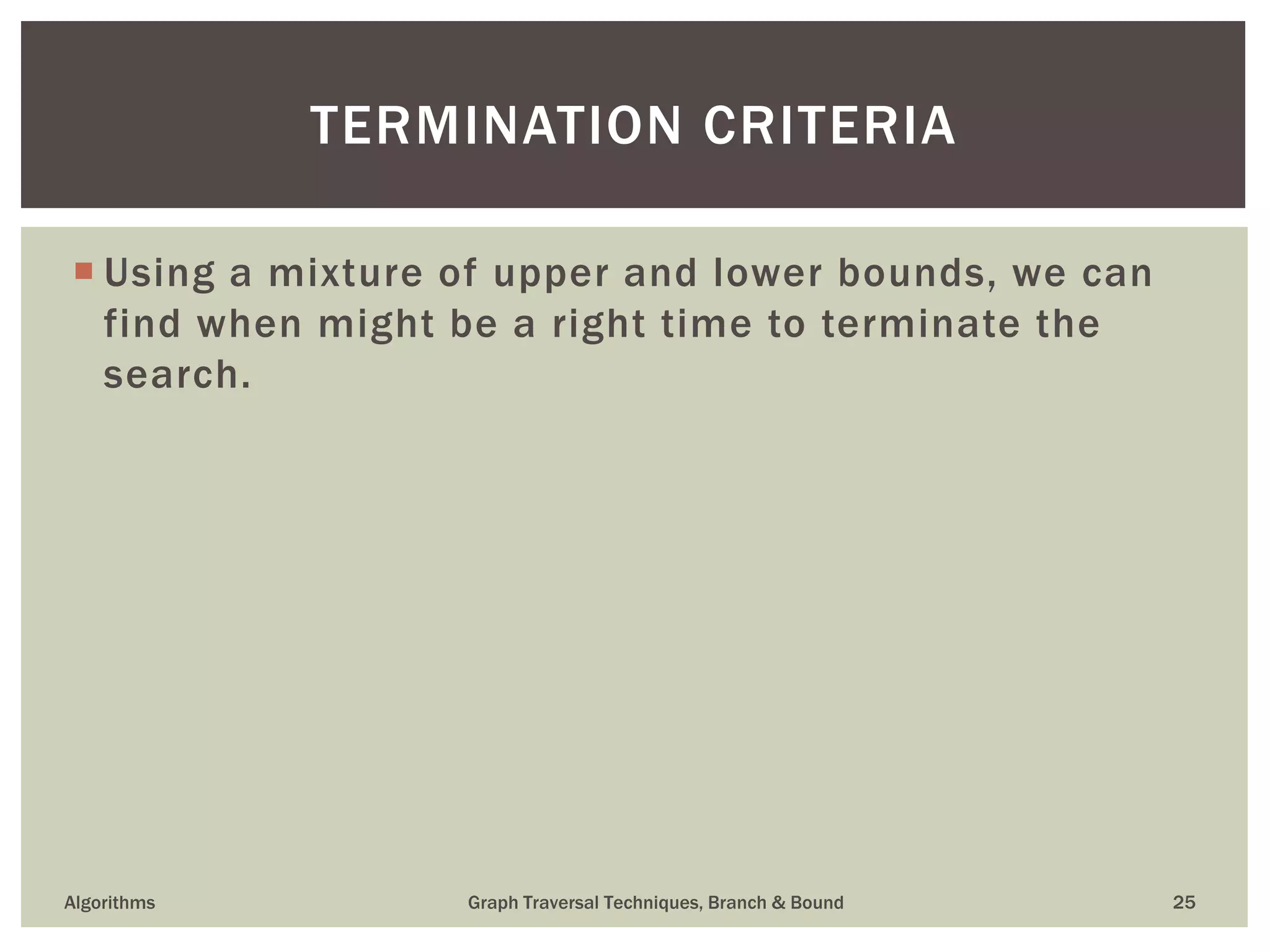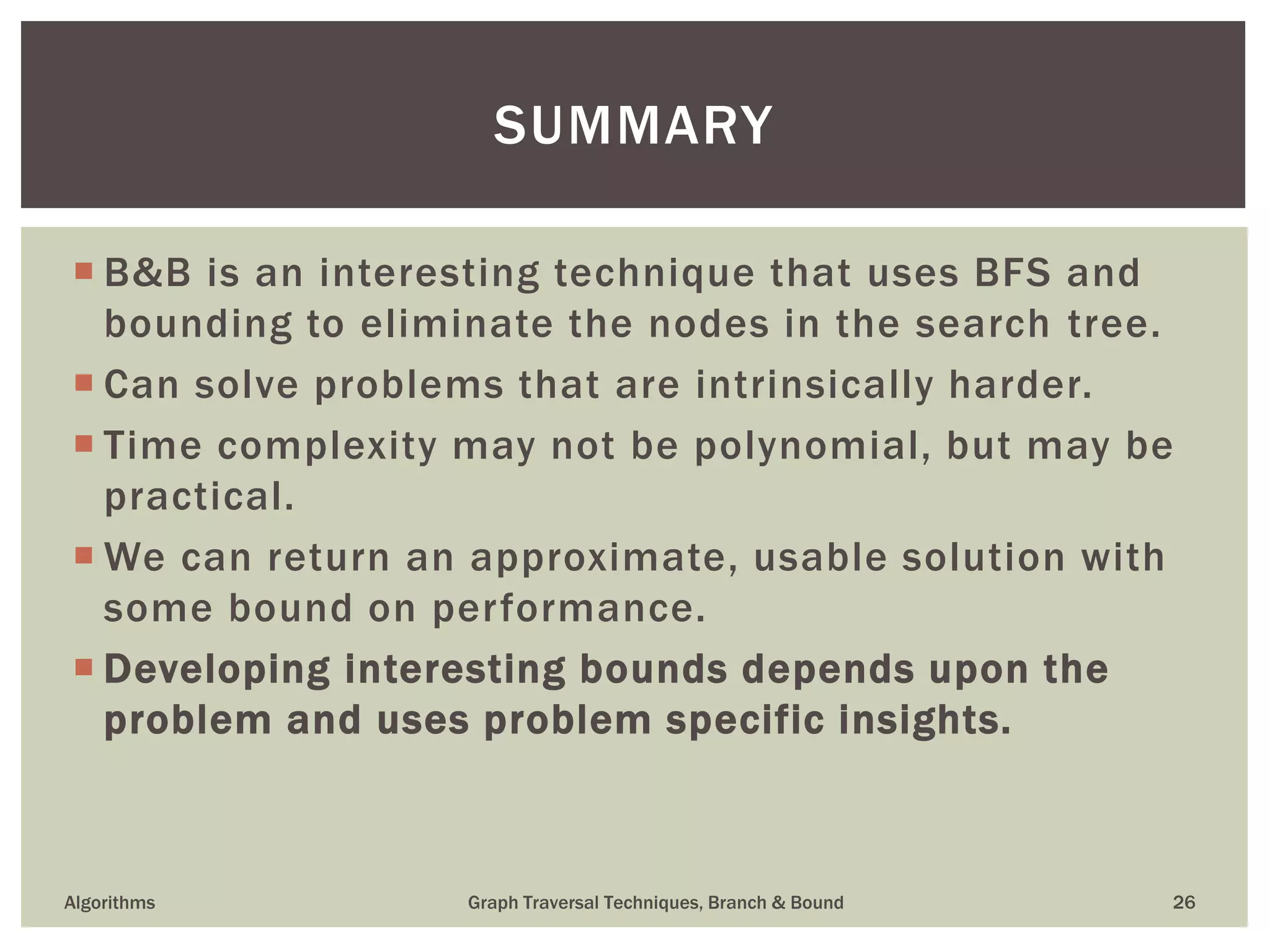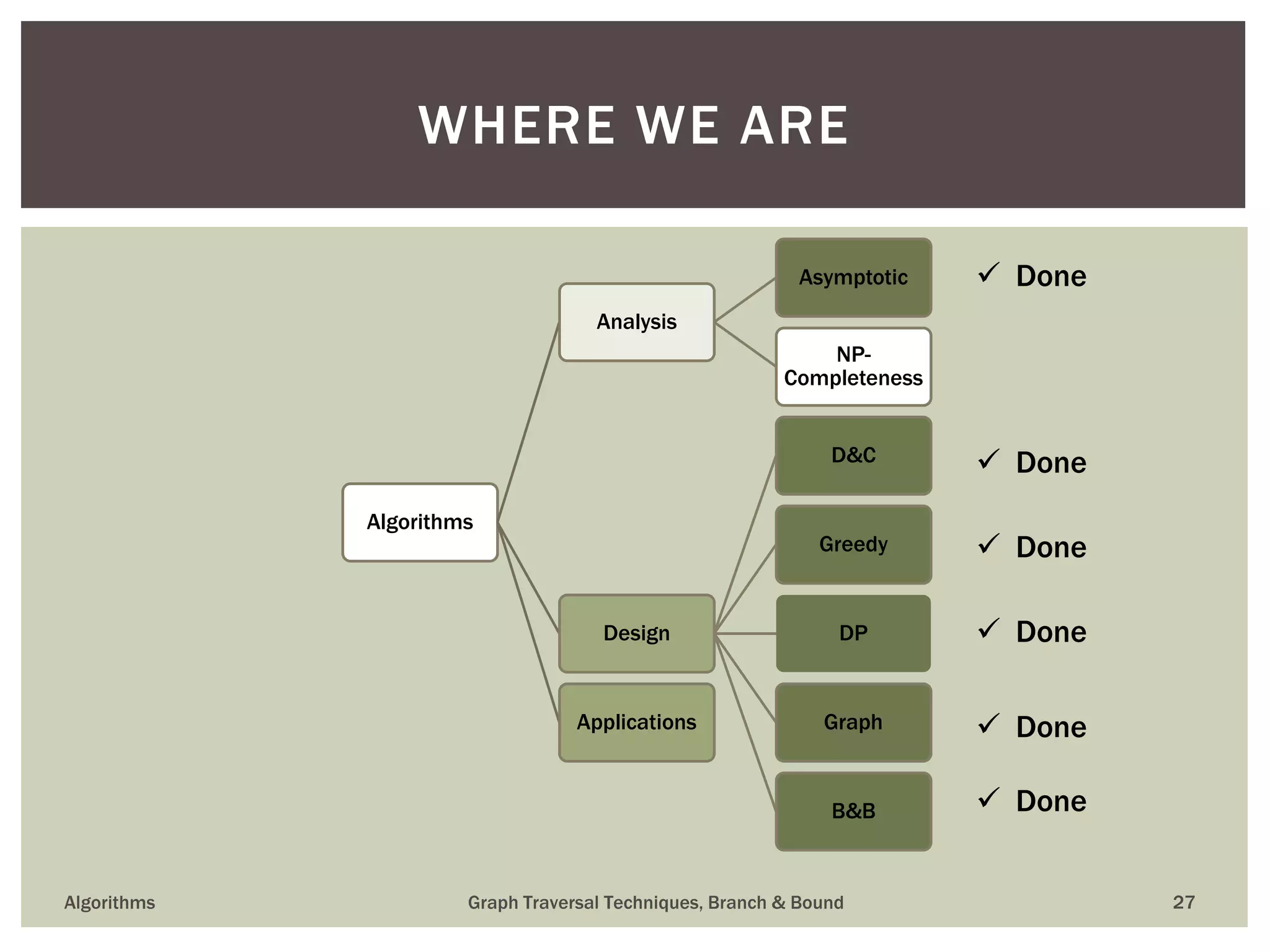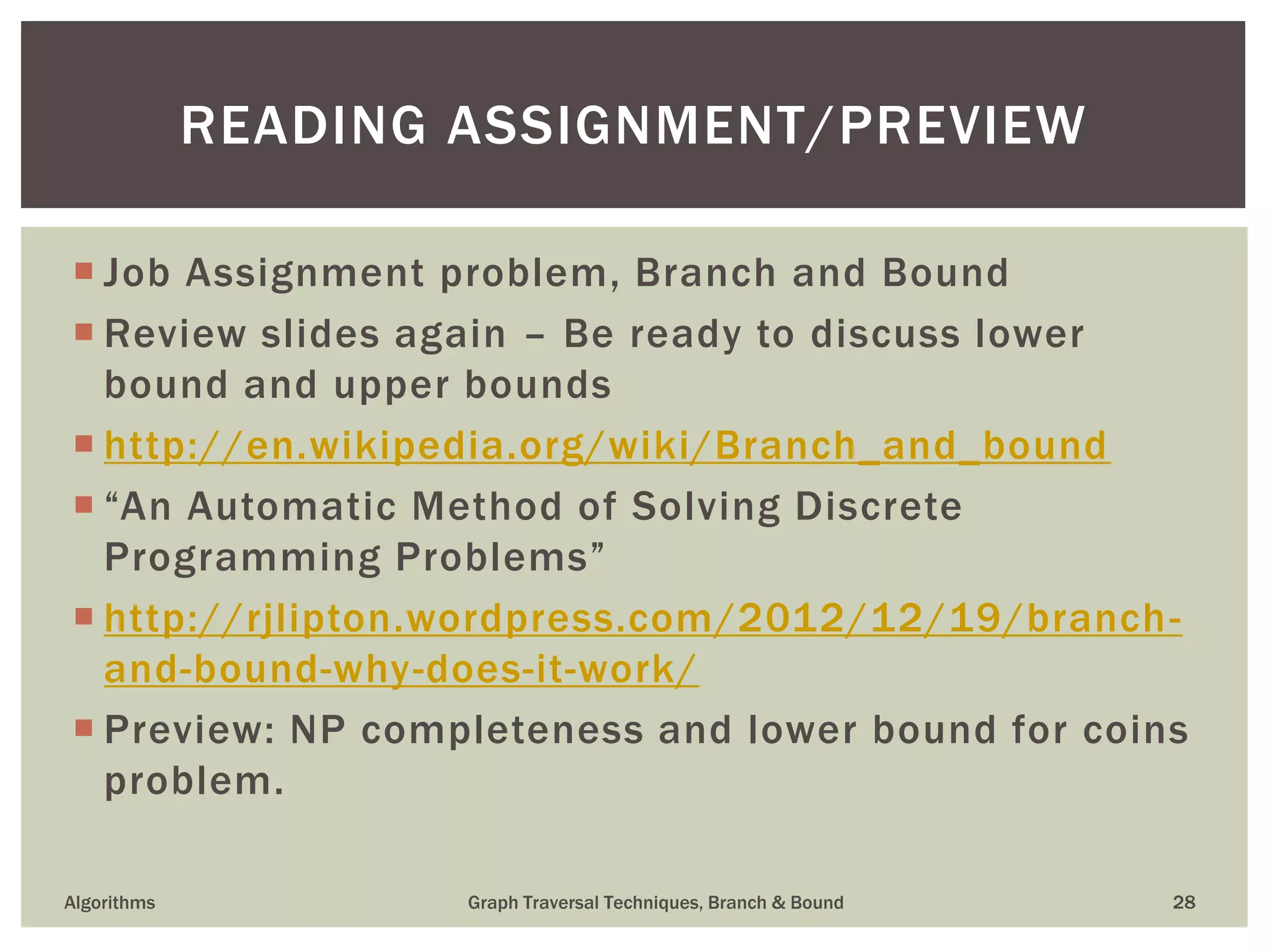The document discusses branch and bound algorithms. It begins with an overview of breadth first search (BFS) and how it can be used to solve problems on infinite mazes or graphs. It then provides pseudocode for implementing BFS using a queue data structure. Finally, it discusses branch and bound as a general technique for solving optimization problems that applies when greedy methods and dynamic programming fail. Branch and bound performs a BFS-like search, but prunes parts of the search tree using lower and upper bounds to avoid exploring all possible solutions.
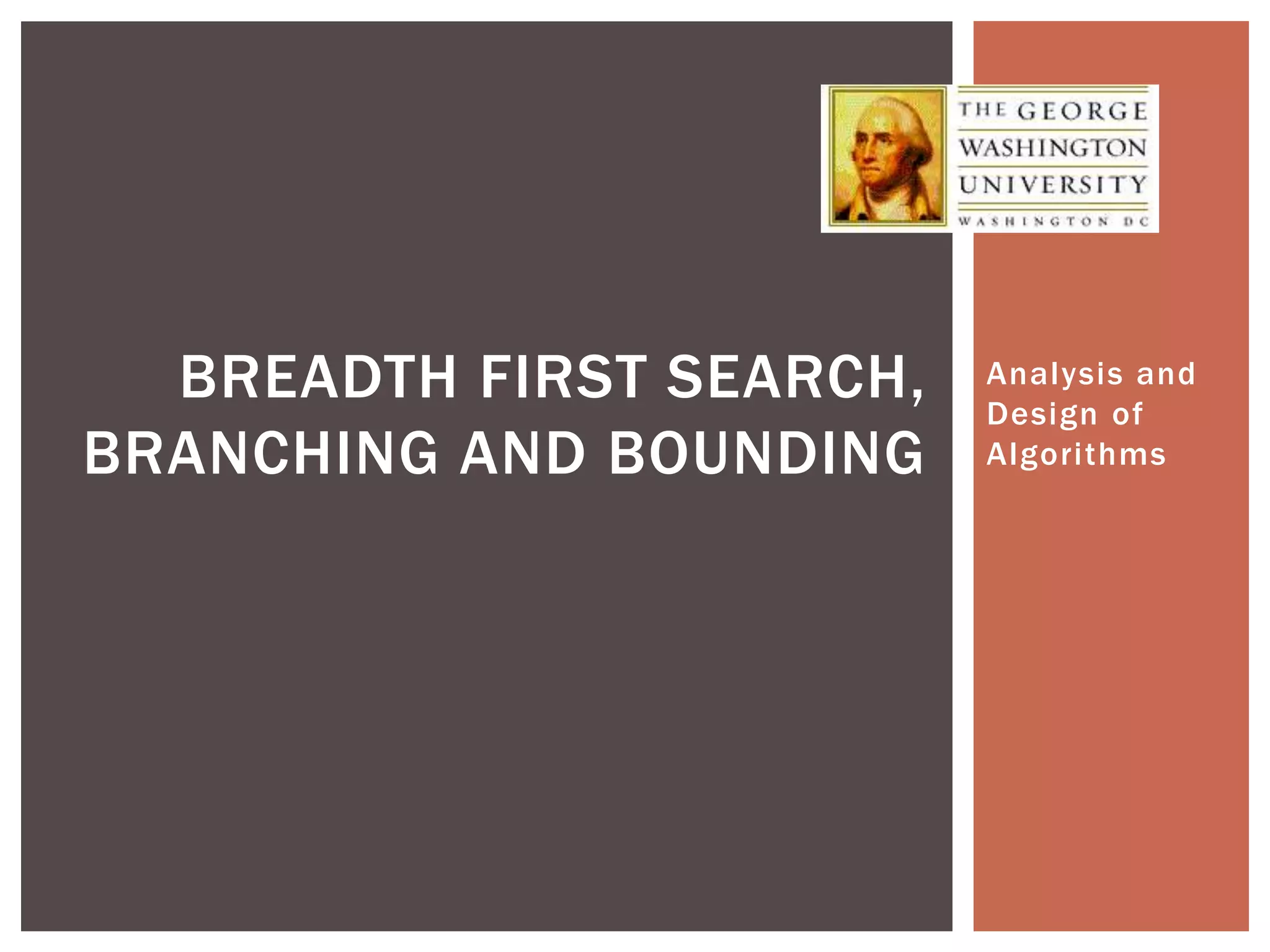
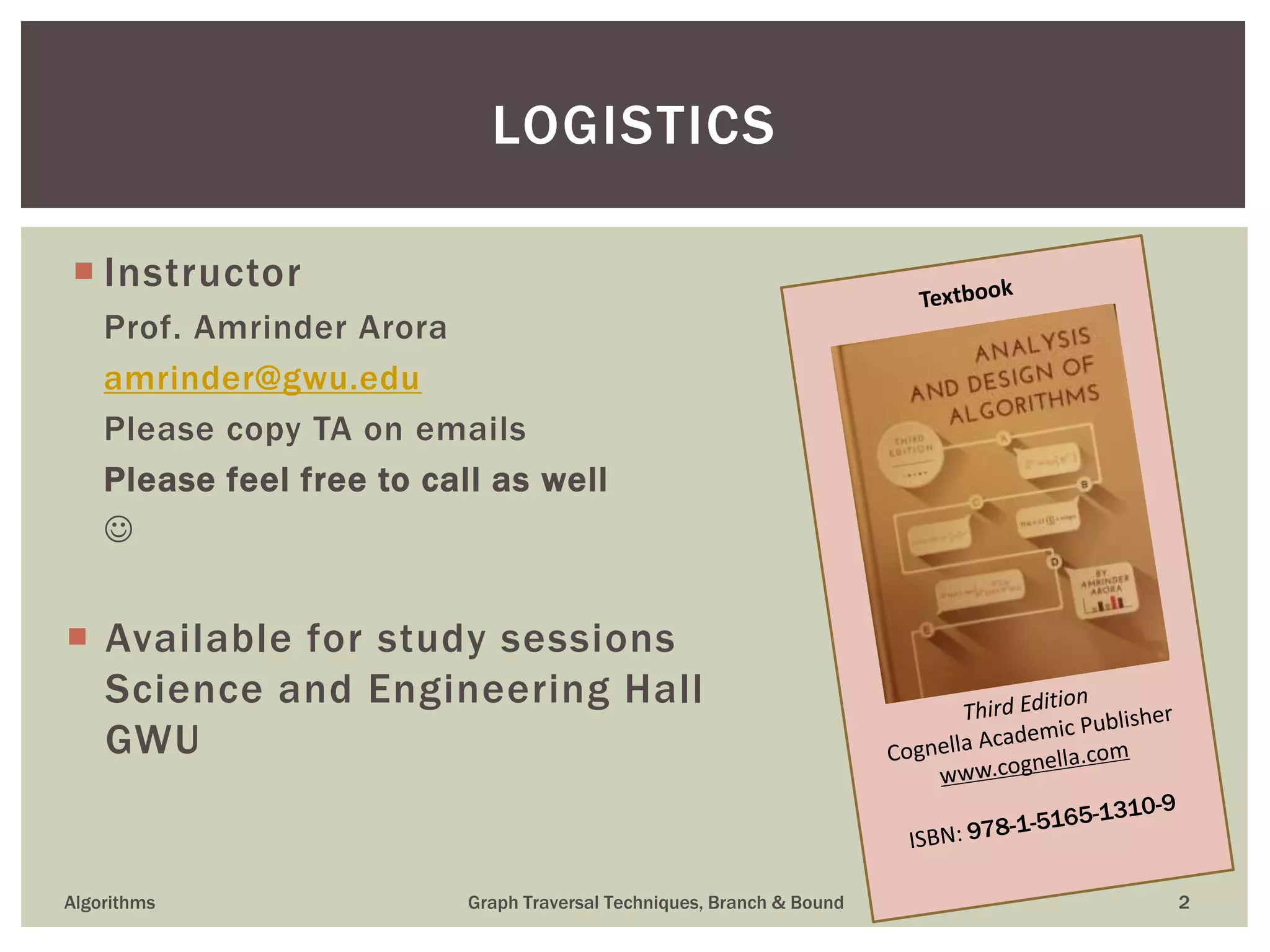
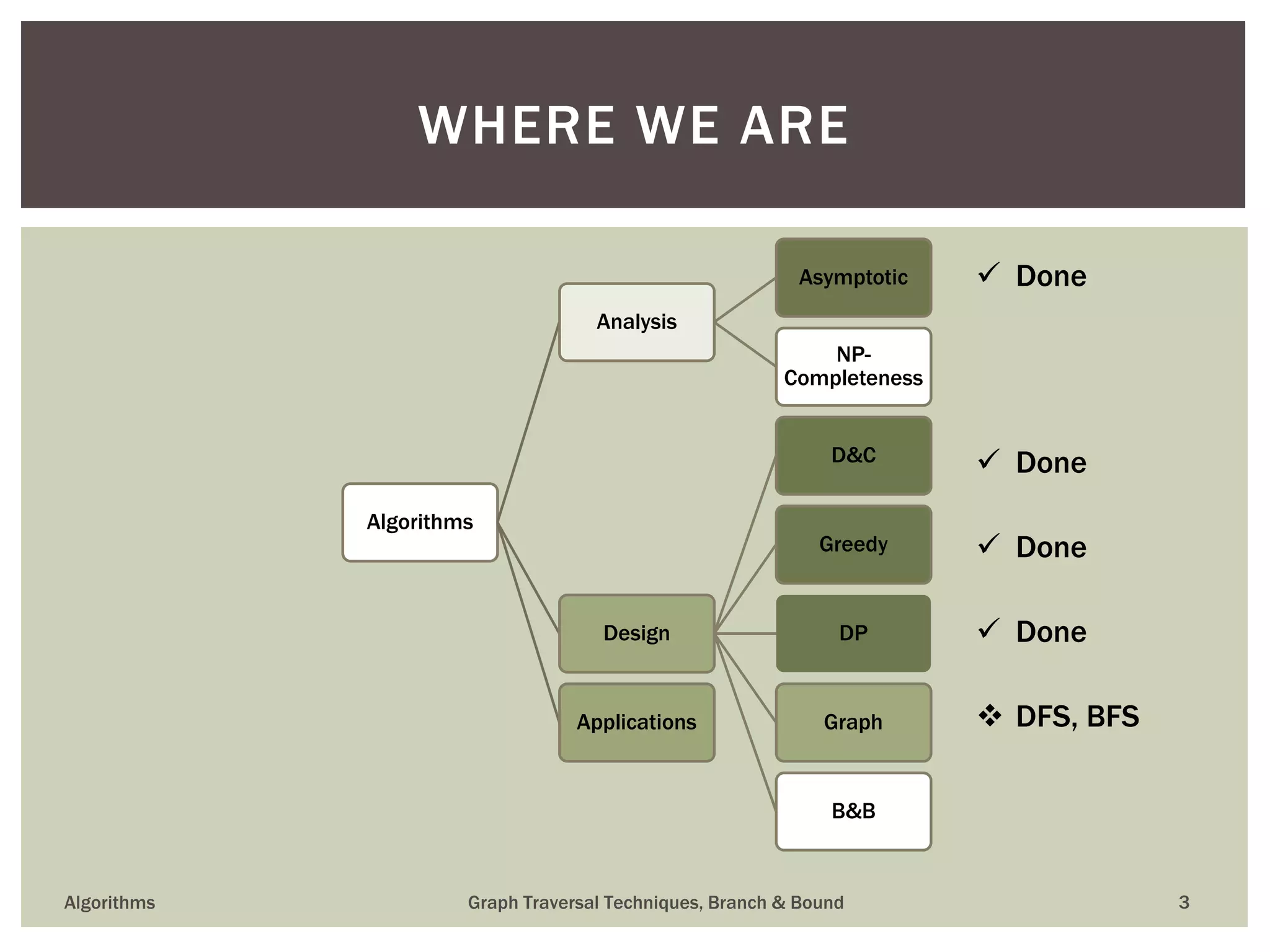
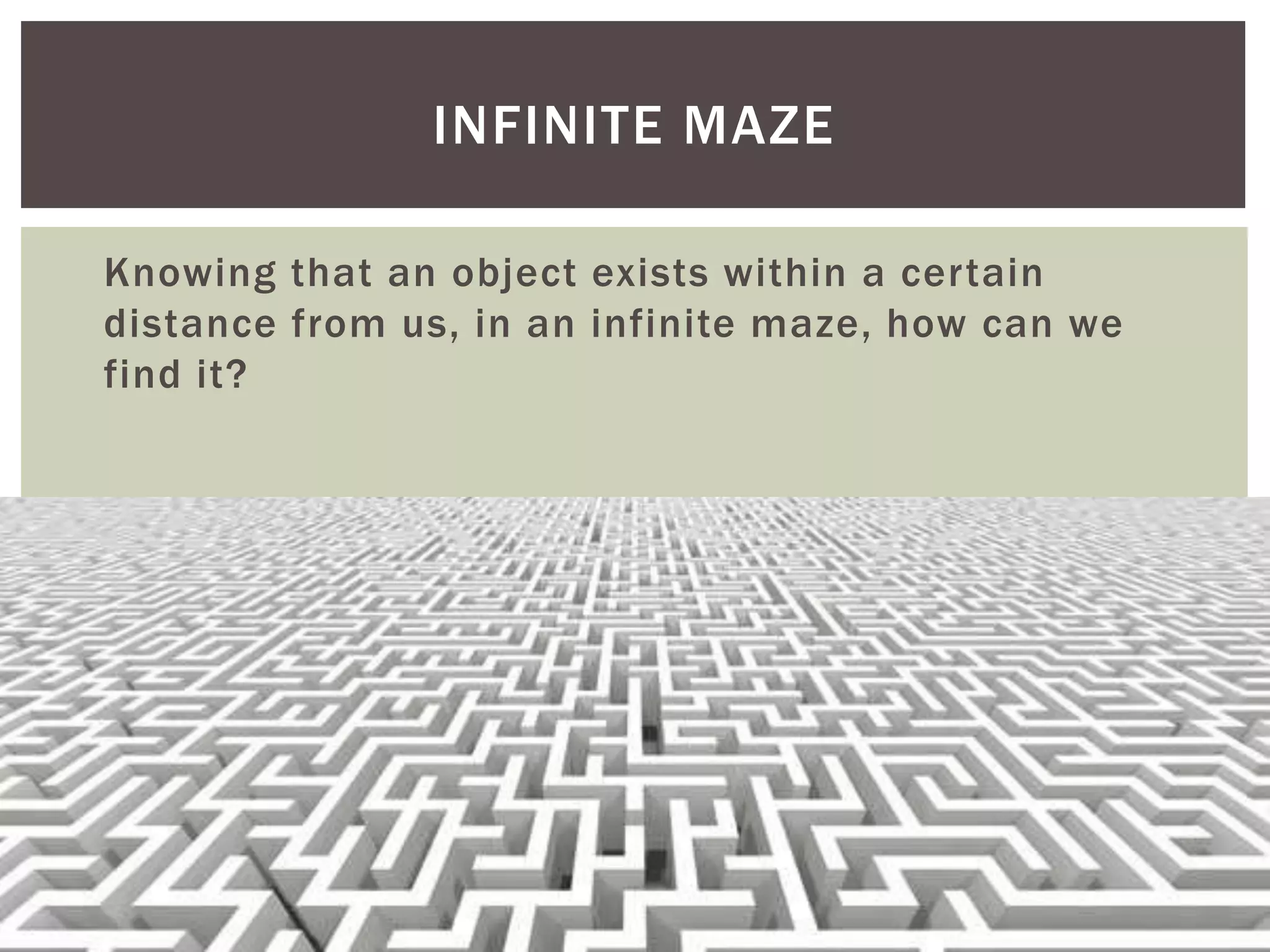
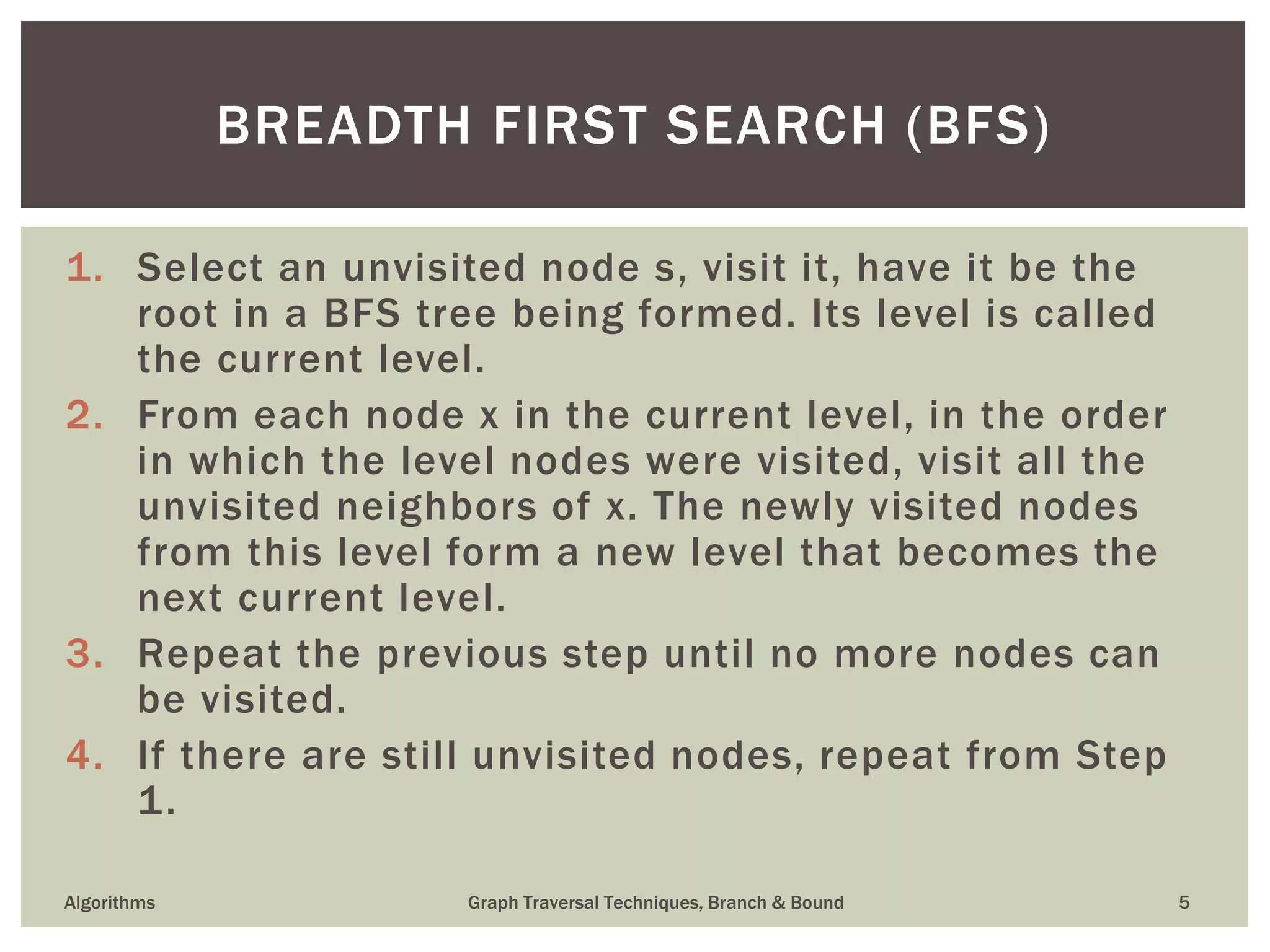
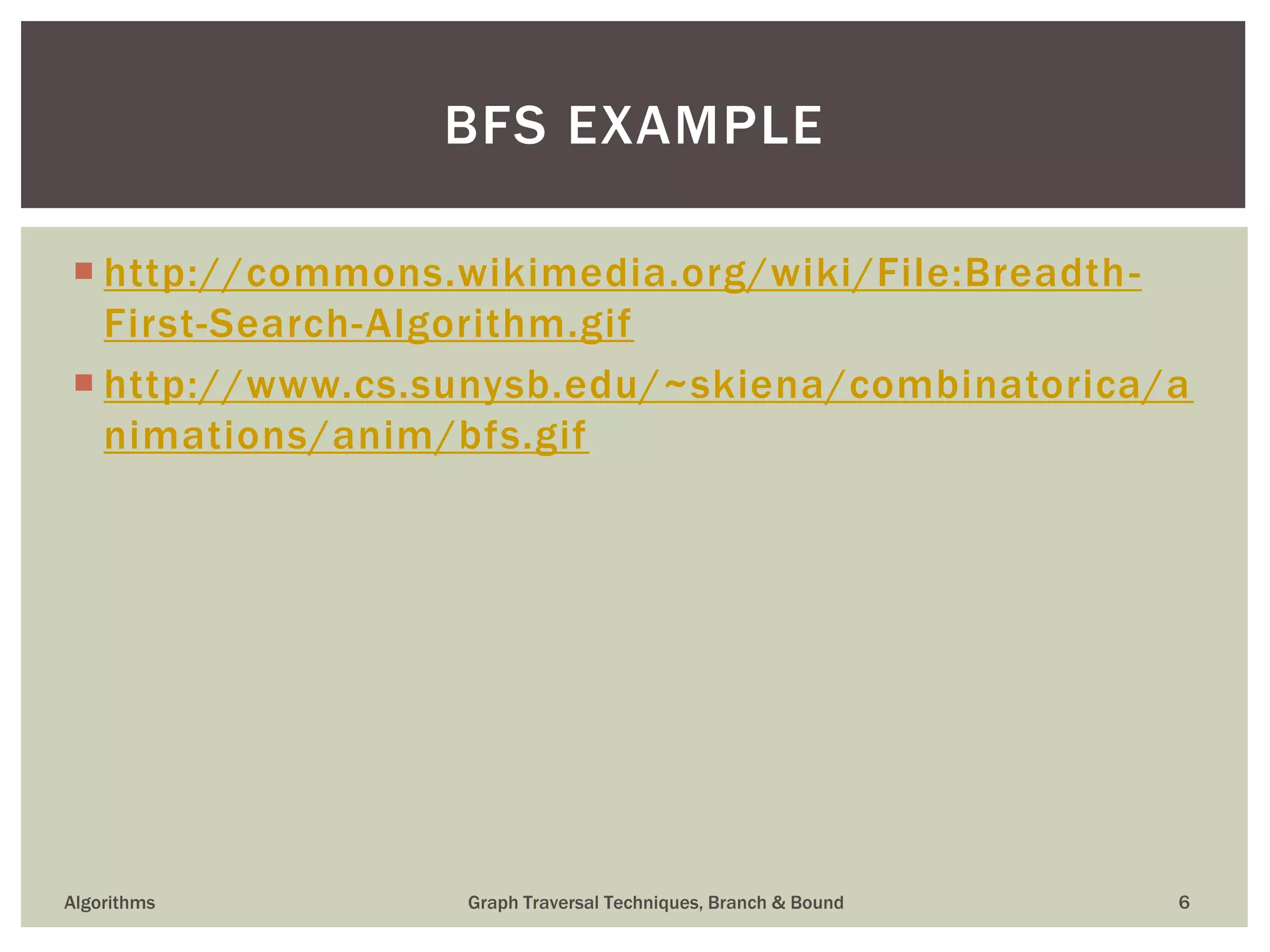
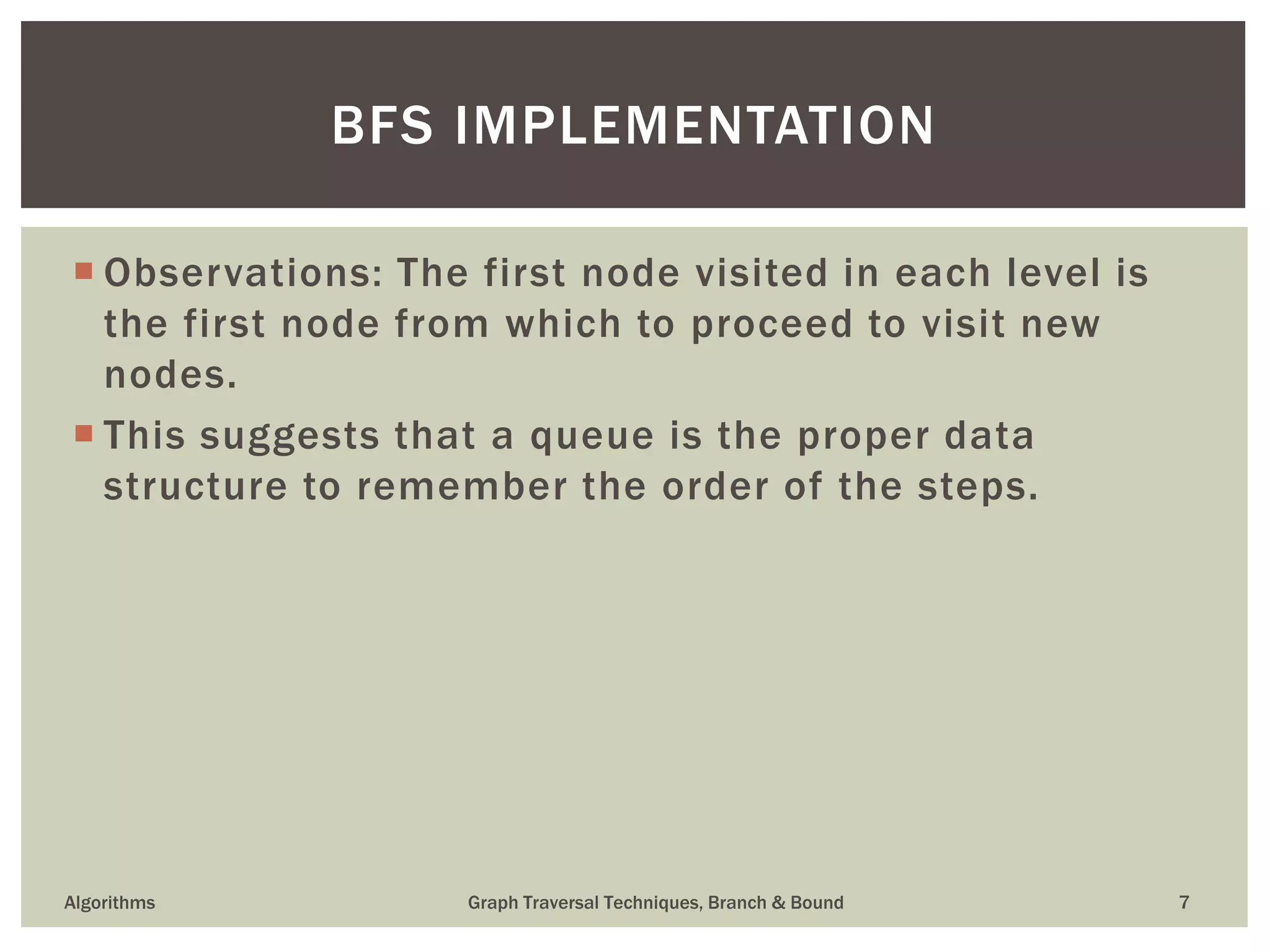
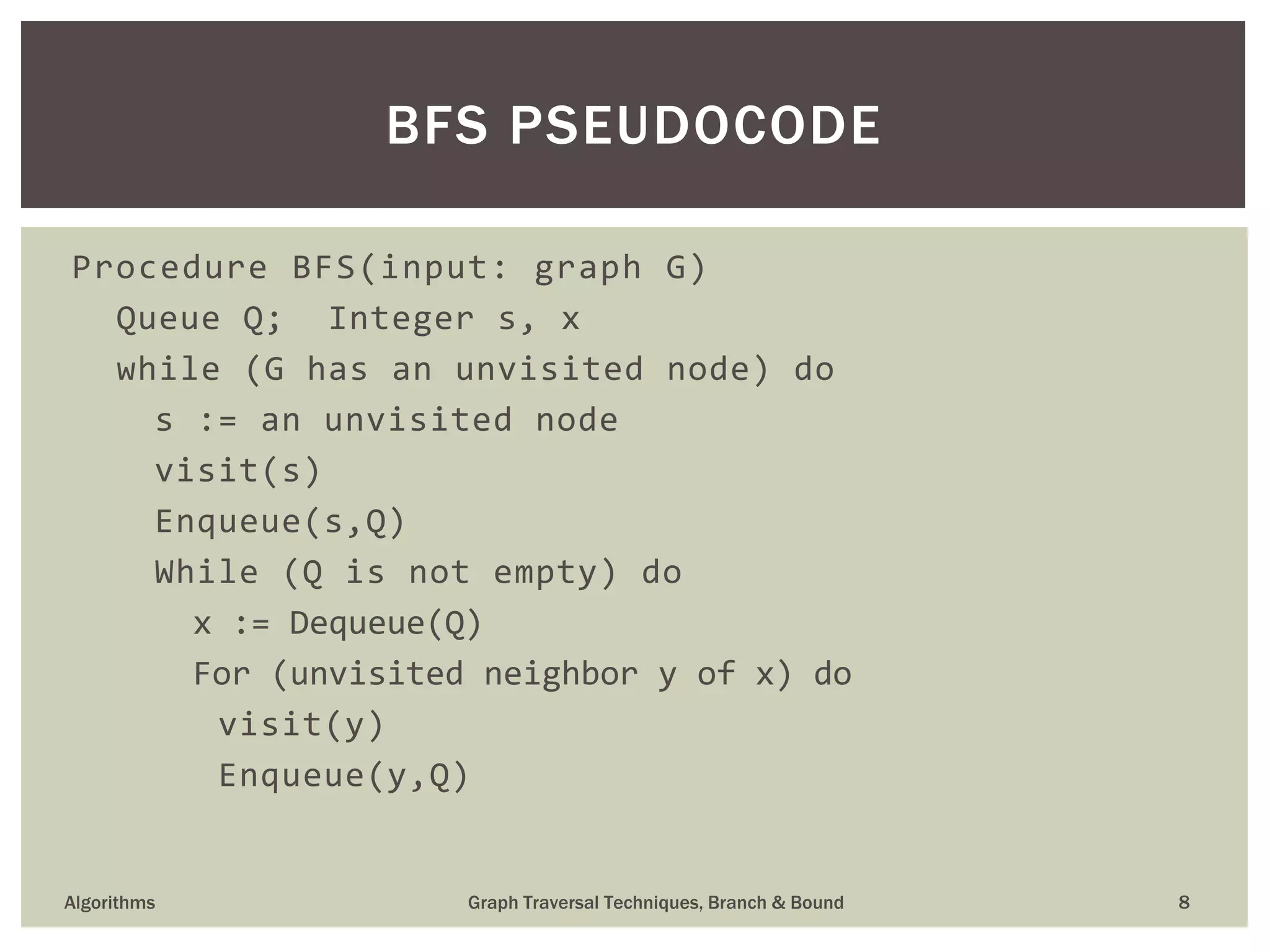
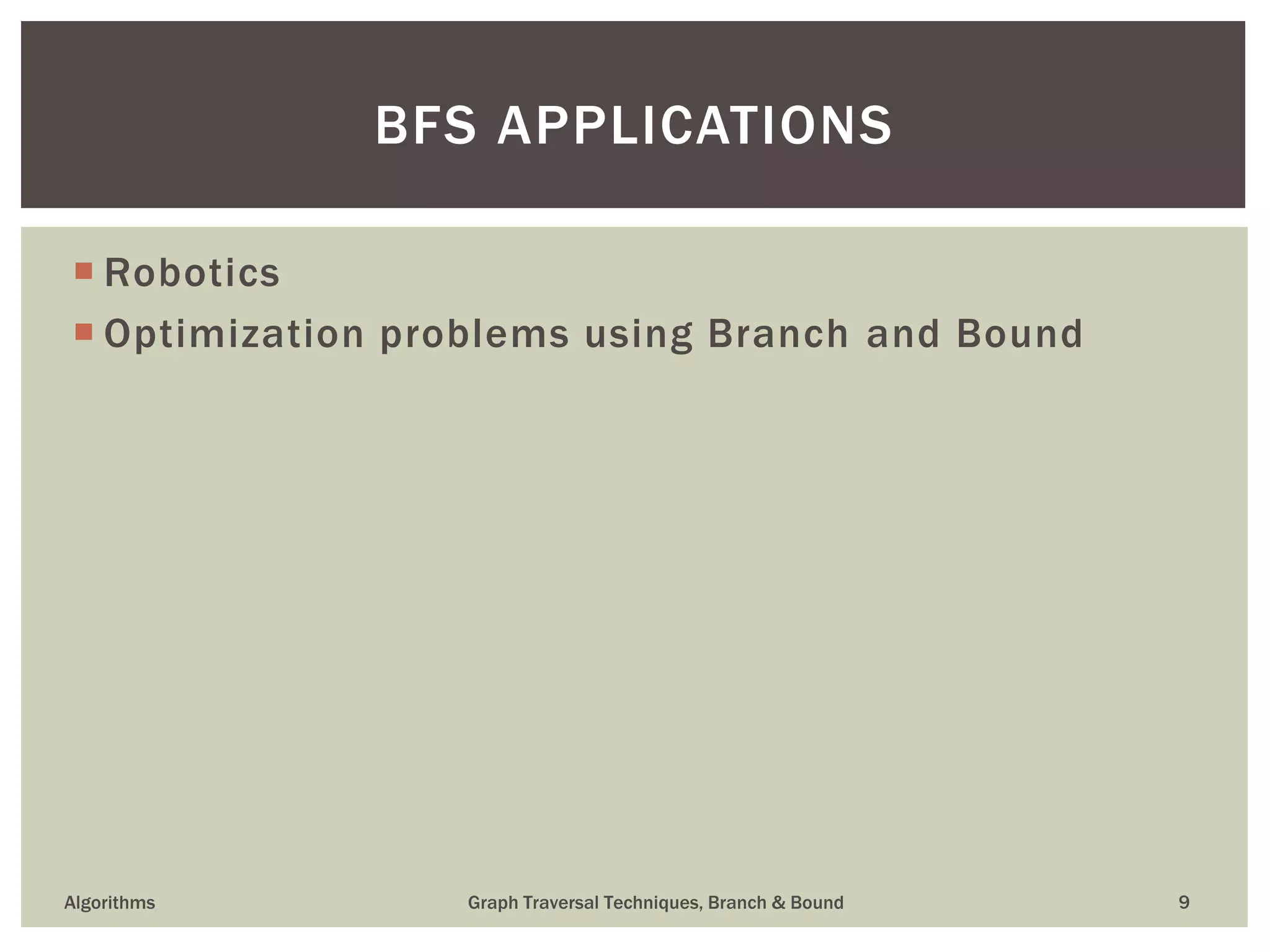
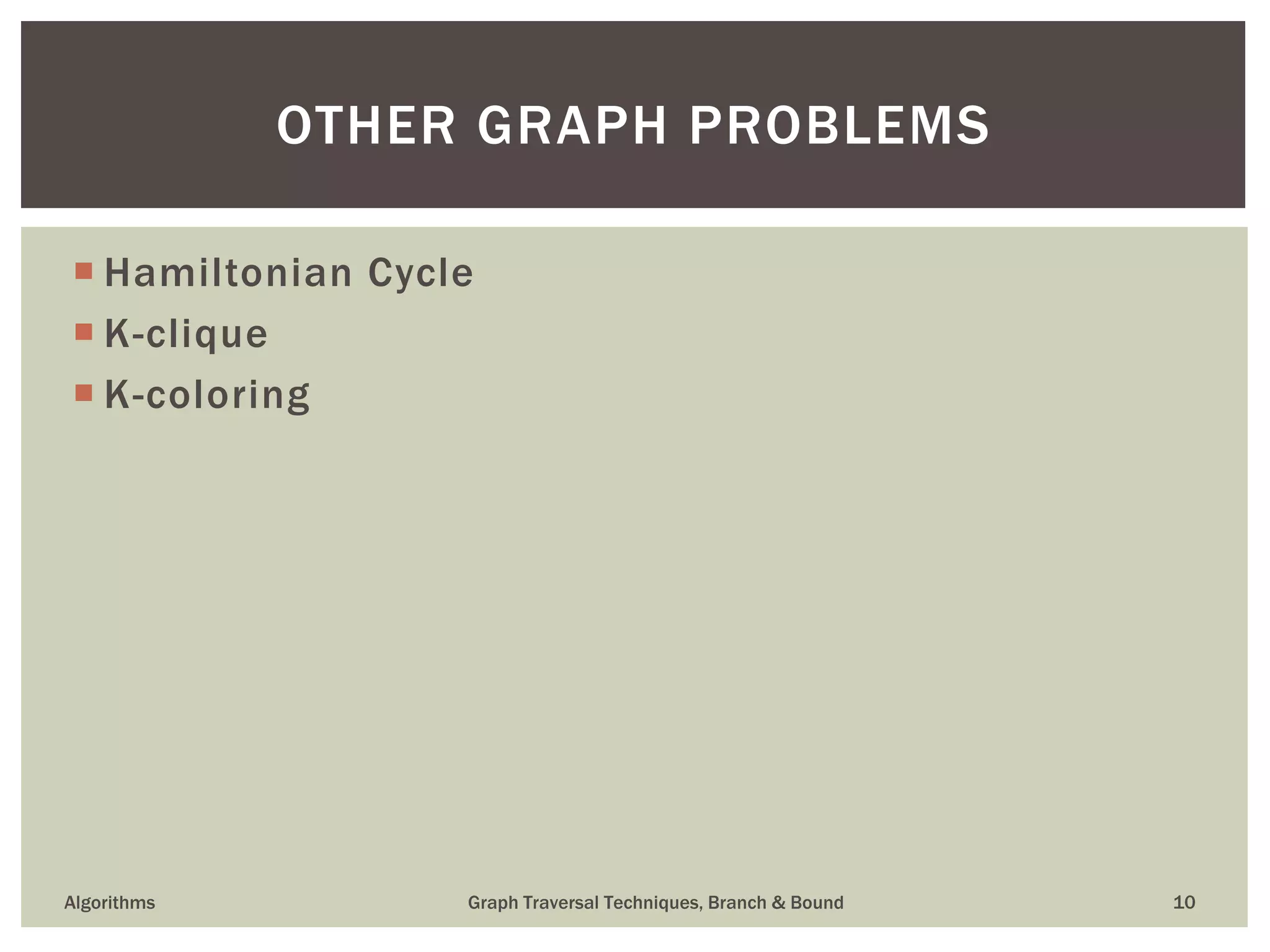
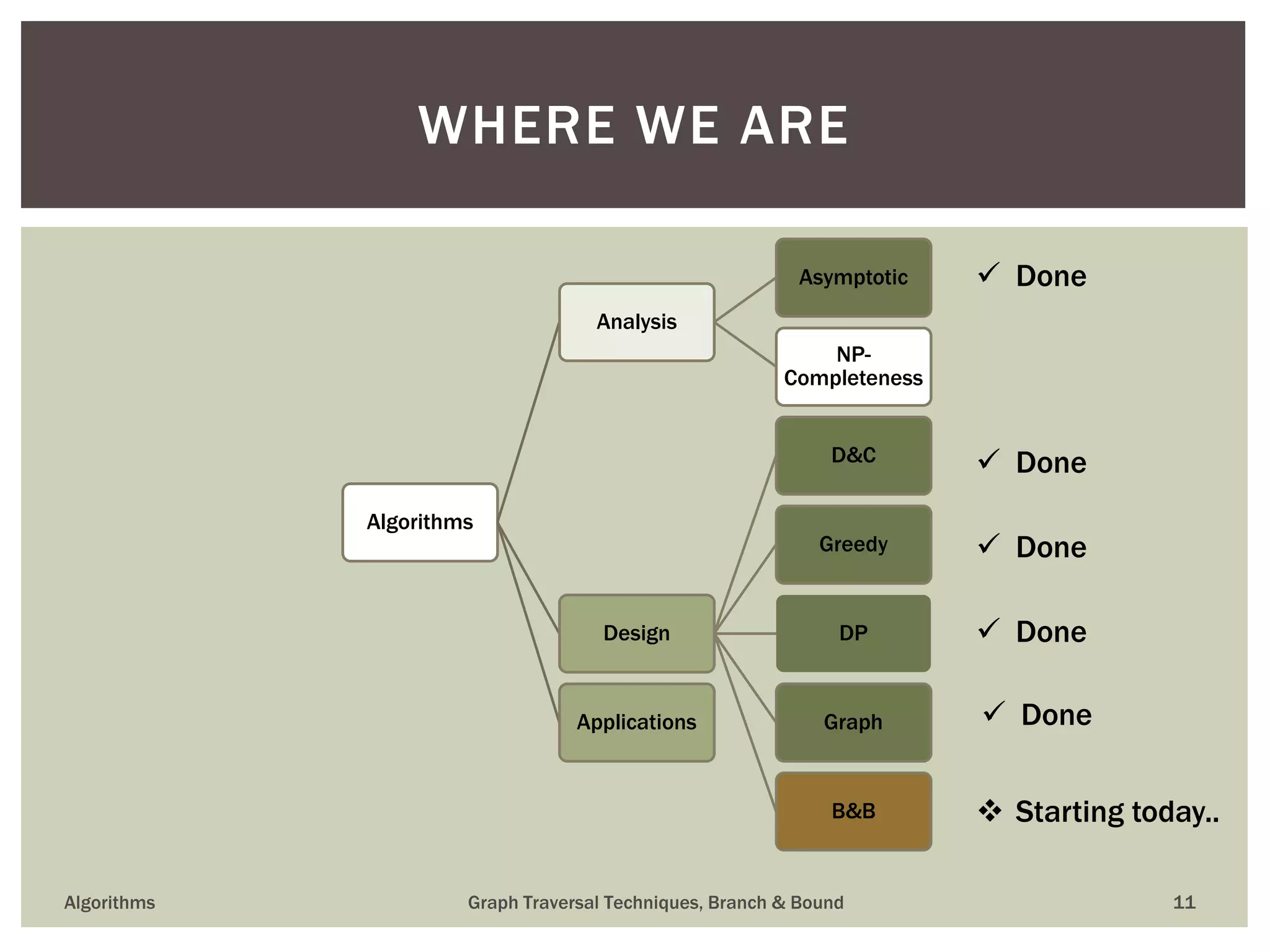
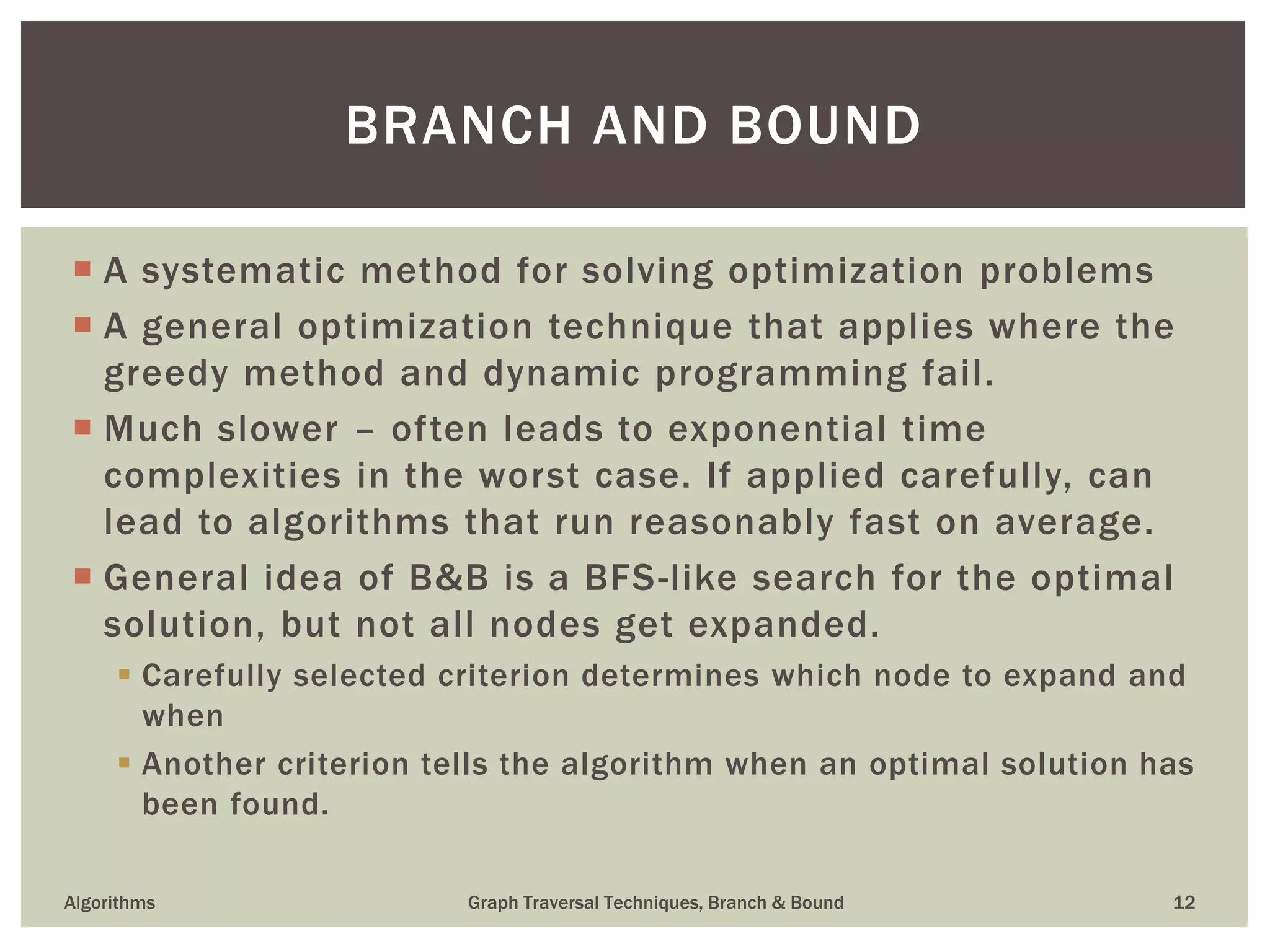
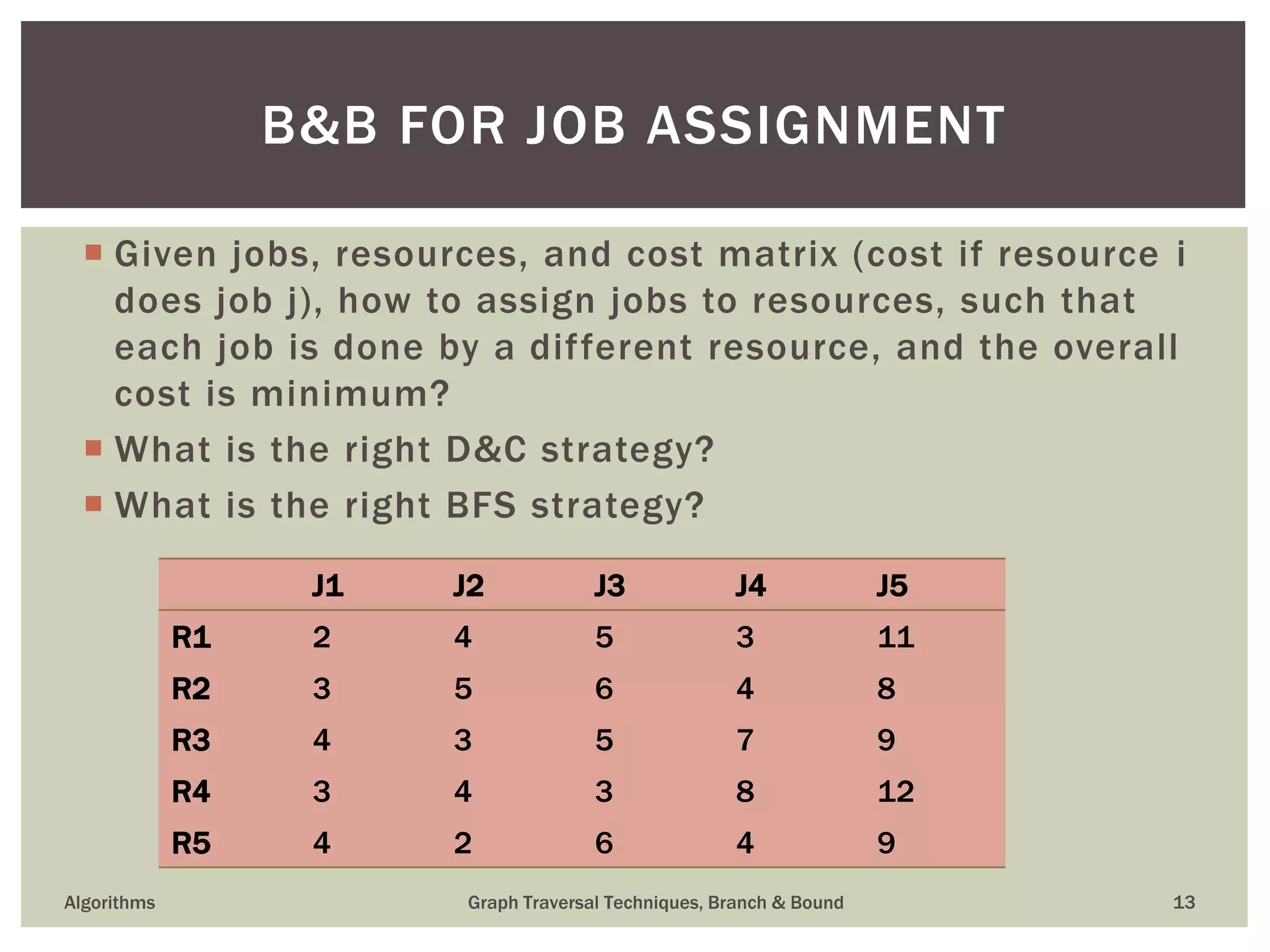
![What is the lower bound? [In other words, how much will it cost at minimum to do the job assignment?] Each job must be done – so if we add minimum cost per job, then that must be minimum cost Each person must do a job – so if we add minimum cost per resource, then that must be minimum cost Taking the maximum of these two minimums, is a good “lower bound”. Algorithms Graph Traversal Techniques, Branch & Bound 14 LOWER BOUND](https://image.slidesharecdn.com/graphtraversalp2bfsbb-160405004113/75/Graph-Traversal-Algorithms-Breadth-First-Search-14-2048.jpg)
